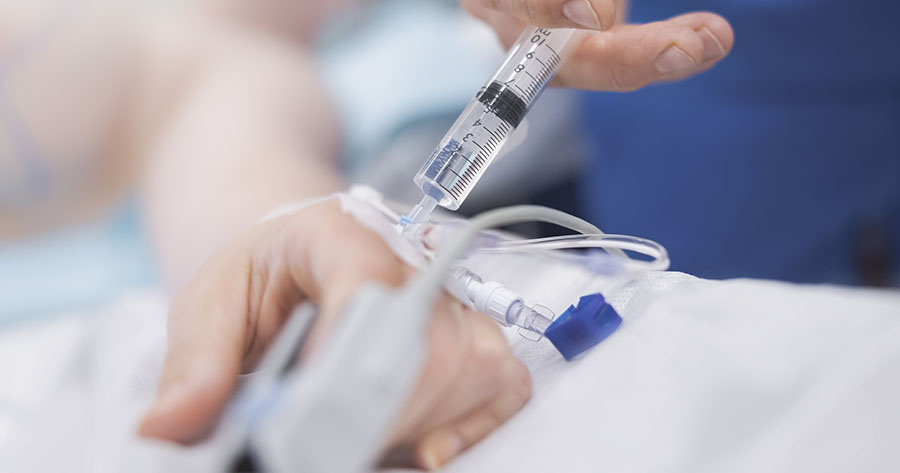The use of insulin analogues in managing childhood diabetes has changed the approach to insulin and carbohydrate management. Multiple dose injections (MDI) and carbohydrate counting (CC) are now common features of treatment regimens. CC is a meal-planning approach for people with diabetes, with a focus on carbohydrate as the primary nutrient affecting the postprandial glycaemia response (Sheard et al, 2004; Kawamura, 2007). It can be used as a tool to calculate the carbohydrate content of foods and facilitate accurate adjustment of rapid-acting insulin (RAI). It can also make food planning more flexible (Waldron, 2007; Hanas, 2009; Smart et al, 2009).
Education is essential for children and their families when CC in order to help them calculate the correct dose of insulin. To date, limited evidence exists on the current practice of insulin dose adjustment and CC education in England. A former informal survey found a lack of consensus in the calculation of ratios and corrective insulin doses, as well as dose adjustment resources and education programmes for the healthcare professional and people with diabetes (Slegtenhorst et al, 2010). This pilot survey aimed to identify the current approaches to MDI and CC in the East of England Paediatric Diabetes Network.
Survey sample and method
An email survey was distributed in April 2011 to 17 hospitals in the East of England Paediatric Diabetes Network. Thirteen dietitians covering the 17 hospital units returned the survey (some dietitians cover more than one unit). The survey encompassed a multiple question and answer format with opportunity for additional comments. Two examples of survey questions included were:
- Do you teach insulin dose adjustment for carbohydrate amount?
- At what point from diagnosis would you teach carbohydrate counting and insulin dose adjustment for carbohydrate amount?
Results
Carbohydrate counting and insulin dose adjustment
Ninety-two percent (n=12) of the hospitals teach children and young people and their families insulin dose adjustment for carbohydrate amount. Four out of 13 dietitians (31%) reported teaching insulin dose adjustment at varied times, according to the needs of the individuals The remainder of children and young people and their families are taught within the following time frames: at diagnosis (n=1; 8%); 1–2 months after diagnosis (n=2; 15%); 3–5 months after diagnosis (n=3; 23%) and 6–11 months after diagnosis (n=2; 15%). One hospital reported being unable to offer education due to lack of funding (8%).
Primarily, CC is taught on a one-to-one basis (n=6; 46%); however, some hospitals use a combination of group and one-to-one teaching (n=7; 54%). Group training sessions are primarily aimed at 6–10 individuals, with each session lasting 90–120 minutes. The distribution of age of the children and young people in the group CC sessions was as follows: 0–5 years (n=3; 23%); 6–10 years (n=6; 46%); 11–15 years (n=0); 16–20 years (n=0); and greater than 20 years (n=0) and four (31%) provided no response.
The most common method of CC is in multiples of 10 g (n=8; 62%), followed by 15 g portions (n=2; 15%). Two hospitals gave no response (n=2; 15%) and the rest said it was not applicable (n=1; 8%).
Insulin:carbohydrate ratio
Six dietitians (46%) adjusted RAI and kept the carbohydrates in multiples of 10 g portions; five (38%) kept the insulin in increments of 1 unit and adjusted carbohydrate in grams, and two dietitians (15%) did a combination of both.
Timing of injections with meals
All 13 dietitians reported providing children and young people with a sensitivity factor to correct blood glucose levels outside of target and give RAI before meals. The practice of giving RAI with snacks differed and these results can be seen in Figure 1.
Assessment of insulin dose adjustment with CC
A total of 77% of the hospitals (n=6) requested blood glucose levels pre- and postprandial to alter ratios. The majority of hospitals assessed children and young people’s CC skills at least once a year (n=7; 54%), one (8%) assessed skills at every clinic and two (15%) had no formal assessment. Two dietitians (15%) did not answer and one (8%) said that the question was not applicable.
Conclusion
NICE guidance recommends that children and young people with type 1 diabetes and their families be offered timely and ongoing opportunities to access information about the development, management and effects of type 1 diabetes. The information provided should be accurate and consistent, and should support informed decision-making. From the resources sent in by the dietitians we surveyed and the information given, it is clear that there are great variations in the advice provided to children and young people and their families. It would be beneficial if resources were standardised to ensure consistent messages between hospital units especially when children are under shared care.
A further suggestion would be to develop a short accredited course for paediatric dietitians that facilitates the development of paediatric diabetes educator skills, covering areas such as insulin types, insulin regimes, calculation of ratios, insulin dose adjustment, carbohydrate counting, scenarios and so on. This would widen the diabetes dietitians’ role and effectiveness. Comments received in our survey indicated some dietitians did not feel confident in adjusting insulin without a nurse’s or doctor’s input. This was also compounded by the lack of insulin dose adjustment protocols and documents within the hospital trusts, as well as a network that allows for dietetic competence in insulin dose adjustment to be assessed and approved. To empower dietitians in helping people with diabetes, a structured course would meet these needs.
The majority of services provide some form of carbohydrate counting, except in the hospitals with a limited dietetic workforce. This forms a key component of diabetes management and therefore is essential in blood glucose control. To use time effectively and improve the experience of people with diabetes, it was suggested that group education sessions on carbohydrate counting are held.





The risk factors and what might be done to address them.
24 Mar 2025